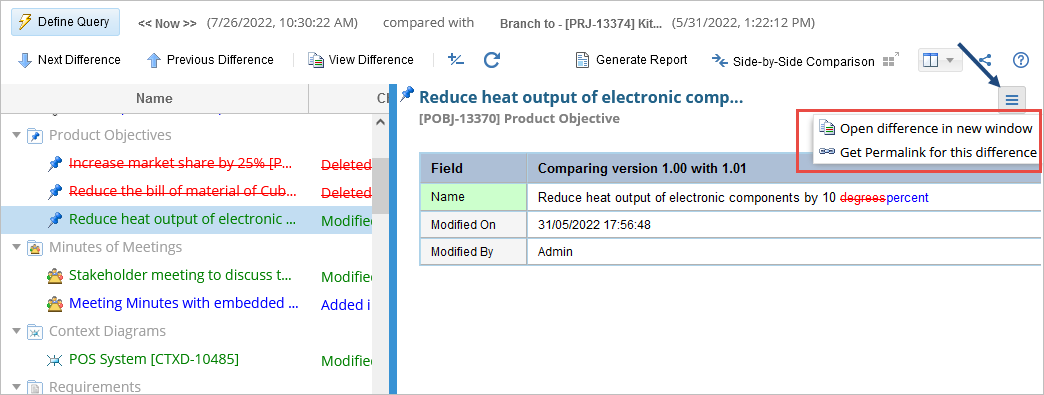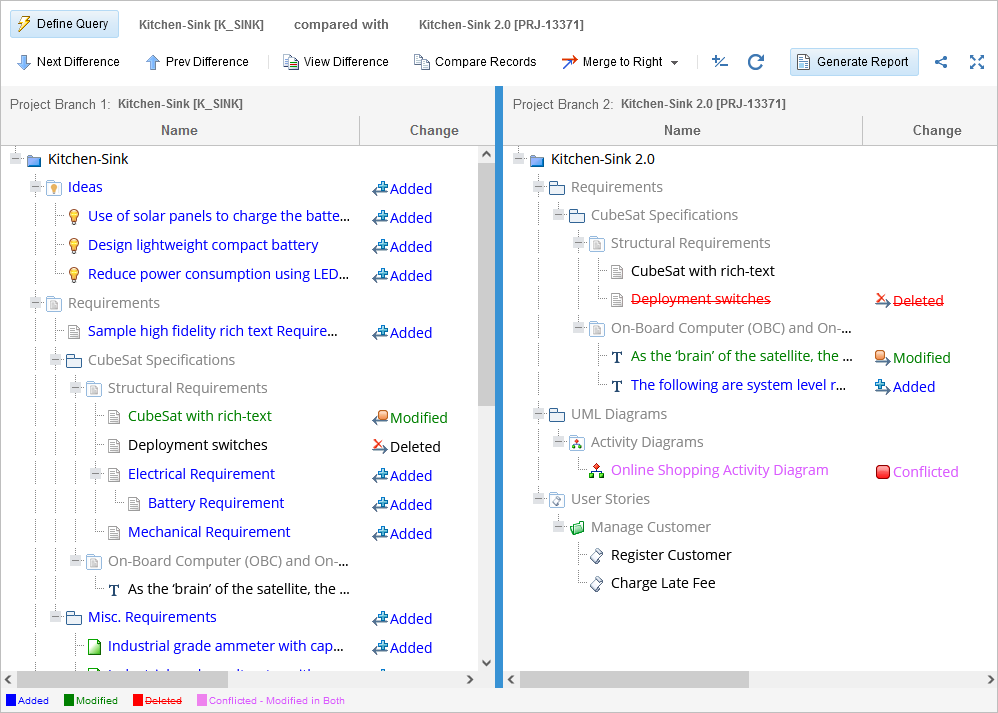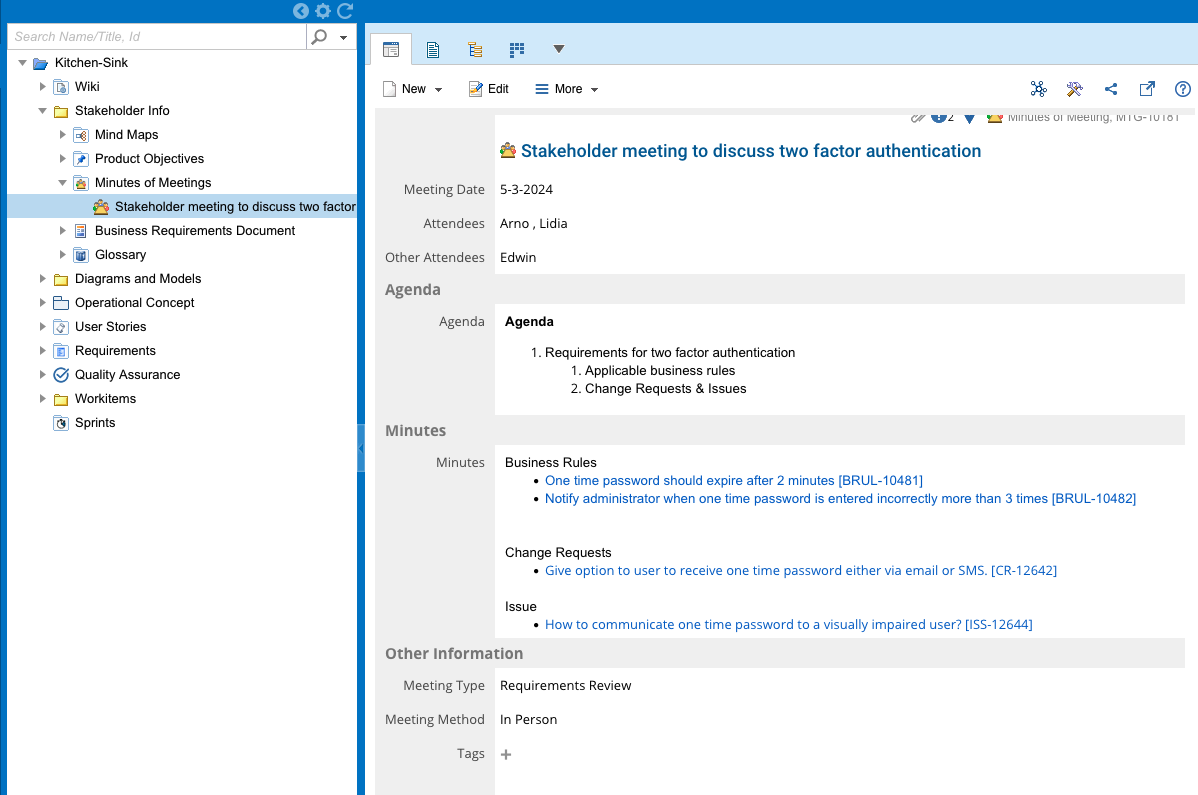Model-Based Systems Engineering with TopTeam
"It's as if this tool was created by a systems engineer who wanted to make his job easier; that's how well the tool matched our work processes".
VDL ETG
Model-Based Systems Engineering
Systems are becoming increasingly complex and developing them takes longer and costs more and more. While the market actually demands that systems be developed faster and faster at lower cost.
Model-Based Systems Engineering helps to better manage complexity, unambiguous communication, early identification of errors and conflicts, traceability of requirements for verification, and reusability of components and designs for multiple products.
“The future of systems engineering is model-based, leveraging next generation modeling, simulation, and visualization environments powered by the global digital transformation, to specify, analyze, design, and verify systems.” Source: Incose Systems Engineering Vision 2035.

Contact Lidia
E-mail: l.faszczewska@synergio.nl
Phone: +31 6 1939 0368
TopTeam Functionality
- Capturing and managing requirements
- Tracing requirements to models (SysML, UML, RML, BPMN)
- Capturing design decisions and relating them to requirements
- Modeling functional and physical product decompositions and tracking to requirements
- Reusing (the specifications of) standard components
- Capturing and managing libraries for reuse and working under architecture
- Verifying and validating specifications
- Capturing, managing, tracking and mitigating risks
- Working together integrally on the basis of one version of the truth
REQUIREMENTS MANAGEMENT
Capture and manage requirements
Document View
In TopTeam, you work on requirements as if you were working in a document. You create chapters and paragraphs. You can include images, create tables, as well as create hyperlinks to objects within TopTeam and also links to external web pages.
Review & approval
The review and approval process is fully supported in TopTeam. Reviewers can comment and approve directly online, and the progress of the review process can be tracked by the review manager. This allows you to know exactly who reviewed and what feedback they provided. Only the owner of the information in TopTeam can make changes based on reviewer feedback.
Traceability
Traceability coverage
With the Traceability Coverage Matrix, you can see which requirements are linked to design objects. Complete traceability from stakeholder needs to implementation. With the standard “Gap Analysis” feature, you immediately identify which requirements are not yet linked and thus have an overview of whether you are complete. Then you easily construct the missing links.
Custom trace schedule
TopTeam allows you to set up your own traceability model. That means you can give each link its own name, but also enforce which links can and cannot be used depending on the object type, in short, maximum flexibility. And if you find that difficult, we are happy to help you with all kinds of examples from our Systems Engineering practice to create the right traceability model for your way of working.
End-to-end visual tracebility
Traceability can also be viewed in TopTeam with various visualizations, including the 360-degree Explorer. This not only makes the links visually apparent , but you can also visually navigate the model by clicking on linked objects.
Model-based
SysML
With Systems Modeling Language (SysML) you design visual models of your system and, of course, link them to requirements or other objects. You can do this in TopTeam, but if other tooling is your preference you can easily include references to it in TopTeam!
UML
Complex products often consist of a combination of hardware (physical components) and software. TopTeam supports Unified Modeling Language (UML) diagrams in addition to SysML to model the software components.
UML and SysML components are linked together using traceability and thus you have captured the interaction between software and hardware.
RML
Requirements Modeling Language (RML) supports the visual capture of business needs. RML looks primarily at the goals of the product rather than the internal design of a product. From the needs of the business, product requirements can be derived.
BPMN
Business Process Modeling Notation (BPMN) is a standard for modeling business processes and representing those business processes in a Business Process Diagram (BPD). In addition, in TopTeam you can make links from process steps in the business process to objects and requirements of your product.
LIBRARIES AND REUSE
Use the library elements

Maintain the library

Libraries
Requirements and component libraries
TopTeam allows you to create libraries of standard requirements and objects (system elements). In a library, you capture requirements and components so you can reuse them in multiple projects. And you can choose whether you want to keep the reused element in sync with the library automatically or determine this manually. The latter is important because information is constantly changing and you want to keep control over the ongoing development of (variants of) your system.
Branching & merging
A library you release for use. Meanwhile, you create a branch of the library so that you can develop it further without causing disruptions to ongoing projects. Then you can merge and release the new version of the library for use.
Baselining & comparing
Using a baseline, you take a “picture” of a project or a self-selected set of objects in TopTeam. You can compare these to other baselines to see what the differences are. This is useful to see the delta in case of more-or-less work or between different versions of your specifications.
RISK AND TEST MANAGEMENT
Risks and testing
Test Management
TopTeam offers comprehensive test management functionalities. You can even automatically generate Test Cases from a Use Case. Test Cases you include in a so-called Test Suite. A Test Run is the execution of a Test Suite where the observed Test Results are captured. You can run a Test Suite multiple times – more Test Runs – and record the results.
Running tests and capturing test results is not necessarily always done in TopTeam itself, but setting up your test plan and traceability to requirements is an important part of your verification and validation process!
Risk management
Use FMEA (Failure Mode and Effect Analysis) and Risk Management to capture the risks and their impact on your system and your project. Then identify mitigation measures in the form of additional requirements to reduce risks to an acceptable level and apply traceability so that it is clear how risks are mitigated through controls (e.g., additional requirements or design choices). And you can of course test this to create a “closed loop” and actually see the risk mitigated!
COMMUNICATION AND COLLABORATION
Communicate and collaborate
Single source of the truth
In the TopTeam Repository you capture all information about your system: requirements, specifications, ideas, stakeholders, risks, models, test cases and the relationships between them. This makes TopTeam the “single source of the thruth” for everyone involved in developing the system.
Notifications
In TopTeam, you always stay informed. Using notifications, you subscribe to adjustments made on objects of interest to you. You will automatically be notified if anything has changed.
Meeting minutes
Meetings and their minutes are conveniently recorded in TopTeam. You can create an agenda and invite participants. In the text fields of the report, refer to ojects in the TopTeam repository by hyperlinks. In addition, the report is immediately fixed in a central location, contains decisions regarding your system and is visible to all.
Email (integration)
TopTeam integrates with major email systems such as Microsoft Exchange so you receive all TopTeam messages in Outlook, so you don’t have to be logged into TopTeam.
From project to product to platform
High-tech companies that develop complex products transform their product development approach from project to product to platform oriented work.
This also applies to VDL-ETG. Ton Peijnenburg and Jos de Klerk explain the main challenges for these transformations.
They elaborate on how TopTeam helps VDL-ETG to move from a project-oriented to a product-oriented way of product development and how TopTeam also helps them to transform to a platform-oriented way of product development.
Synergio demonstrates some key features of TopTeam that support these transformations.



















